Rose Hill
Houses within 15km of this house
Displaying 160 houses.
Houses within 15km of Rose Hill
Displaying 160 houses.
| House name | Description | |
|---|---|---|
| Castlemartyr | Seat of the Earls of Shannon in the 18th and 19th centuries, built in the early 18th century by the 1st Earl of Shannon and enlarged by his son the 2nd Earl in the 1760s. At the time of Griffith's Valuation it was valued at £150. Sold to the Arnott family in the early 20th century, it later became a Carmelite college and now functions as a hotel. |
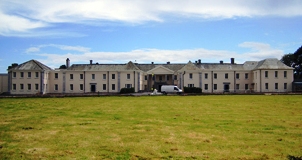
|
| Corkbeg | The Penrose Fitzgerald Papers in the Boole Library document the building of a mansion house at Corkbeg in the 1820s. It was built to replace an earlier house mentioned by Wilson in 1786 as the seat of Robert Uniacke Fitzgerald. It was held in fee by the Fitzgeralds and valued at £65 in the early 1850s. By 1906 it was valued at £81. Bence Jones writes that the Fitzgeralds sold Corkbeg in the mid 20th century. The Irish Tourist Association survey notes that it functioned as a hotel for a few years. It was demolished in order to establish an oil refinery. | |
| Dromadda | A house occupied by Warham Durdin in 1814 and by G. W. Courtenay in 1837. Caroline A. Courtney was resident in the early 1850s holding the property valued at £28 from John Courtenay. It is still extant though not in good repair. |

|
| Ballybricken House | Described by Lewis in 1837 as "the elegant mansion and demesne of D.Connor". It was held in fee by him at the time of Griffith's Valuation when it was valued at £64. The residence of Captain Denis Connor in 1894. In 1943 the Irish Tourist Association Survey mentions it as the residence of J.E. Bird, the walls built in 1820 but the interior having been restored following a fire in 1910. The Survey also notes that it was used as a base by the American navy during the first World War. The site is now covered by industrial premises. | |
| Prospect Villa | Thomas Burke was leasing Prospect Villa from Mary and Catherine Rogers at the time of Griffith's Valuation, when it was valued at £60. Lewis refers to it as the seat of Lt.Col. Burke in 1837. The house was included in the sale of the Rogers estate in the Landed Estates Court in February 1862. In 1943 the Irish Tourist Association Survey noted Prospect Villa as the residence of G. Hosford and outlined Burke's association with the house mentioning that he kept a racing stable there. The house is no longer extant and a factory has been constructed in this area. | |
| Castlewarren | Robert Warren was leasing this property from Mary and Catherine Rogers at the time of Griffith's Valuation, when it was valued at £35. In 1837 Lewis referred to it as a "spacious mansion erected in 1796, the seat of R. Warren". Townsend refers to it as the seat of Thomas Warren "whose style of farming is conducted on the best principles of modern art". It was included in the sale of Warren's estate in October 1850. Now a ruin. | |
| Rock Cottage (Barnahely) | William Warren was leasing this property to Richard Foott at the time of Griffith's Valuation, when it was valued at £11 5s. A house is still extant at the site. | |
| Shanbally Cottage (Carrigaline) | Thomas Burke was leasing this property to Joseph Beaumont at the time of Griffith's Valuation. It was valued at £34 and included a mill. The latter, known as Rathanallig Mills (W751651), is described as "in ruins" on the 25-inch Ordnance Survey Map of the 1890s while the house is diminished in size and has since disappeared. There are still buildings on the mill site. | |
| Ardmore House | Richard Roberts held this property in fee at the time of Griffith's Valuation, when it was valued at £55. Lewis refers to is as the seat of J. Roberts in 1837. In 1943 the Irish Tourist Association Survey mentions it as the birthplace of Lieutenant Richard Roberts, Master of the ship, Sirius, the first steamship to cross the Atlantic. Ardmore is still extant and occupied. | |
| Crosshaven House | Thomas Hayes held this property in fee at the time of Griffith's Valuation, when it was valued at £44. Lewis refers to it as the seat of T. Hayes in 1837. Local sources suggest it was built in the eighteenth century replacing an earlier house. It remainded in the ownership of the Hayes family until the early 1970s. The house is still extant and occupied and sometimes open to the public. |
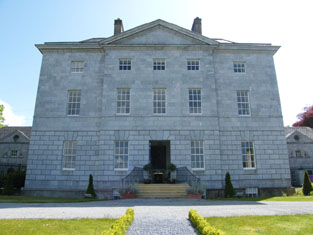
|
| Point House (Crosshaven) | Edward Sisk was leasing this house from the Puxley estate at the time of Griffith's Valuation, when it was valued at £10 10s.The house at the site is known as Point House and the National Inventory of Architectural Heritage suggests it was built in the mid-eighteenth century. |

|
| Fota House | Originally built as a hunting lodge for the Smith Barrys in the 18th century and enlarged in the 1820s to the design of Sir Richard Morrison with further 19th century additions. Valued at £89 and held by James H.S. Barry in fee at the time of Griffith's Valuation. Occupied by Lord Barrymore in 1906 and valued at £160. Inherited by Major and the Honourable Mrs Bell. The Irish Tourist Association survey provides details of some of the paintings in the house and exotic plants in the gardens. Bence Jones writes that Fota was sold to University College, Cork in 1975 following the death of Mrs Bell. It is now in the care of the Irish Heritage Trust and after restoration was reopened to the public in 2009. http://www.fotahouse.com/display.php |

|
| Seamount House (Carrigaline) | Louisa Penrose, with several others, was leasing this property to James French at the time of Griffith's Valuation, when it was valued at £12. Henry Smith was leasing a property [W785625] valued at £10 from the same estate, also in Curraghbinny townland. In 1860, over 600 acres owned by members of the Fitzgerald family and others were offered for sale in the Landed Estates Court. The sale included Seamount House, in the possession of Henry Smith. | |
| Trabolgan | Home of the Roche family for over three centuries. Held by Edmund Burke Roche in the mid 19th century and valued at £100. In 1912 acquired by the Clarke family, owners of the tobacco company in Bristol, manufacturers of Players cigarettes. Owned by the Clarkes until the 1940s when purchased by the Land Commission. The Irish Tourist Association survey noted that it was for sale in 1942. The house was demolished in 1982 and the demesne is now an activity holiday centre, see http://www.trabolgan.com/Home.aspx |

|
| Ballycurrany House | This house was occupied by Joseph Wilson at the time of Griffith's Valuation. He held it from James H. Smith Barry and it was valued at £13. It is no longer extant. | |
| Ballynaclashy House | Occupied by Henry Wilson in the early 1850s, held from James H. Smith Barry and valued at £10.10 shillings. Herny Wilson of Ballynaclashy owned 83 acres in the 1870s. A house is still extant at the site. | |
| Glenview | George Courtenay is recorded as resident at Glen-View in 1814 and also in the early 1850s when he held the property from James H. Smith Barry. The buildings were valued at £9. In 2010 it was offered for sale. |
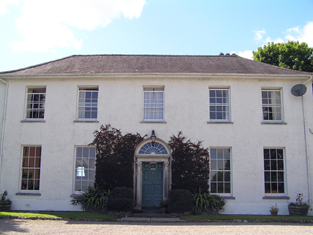
|
| Leamlara | The seat of a branch of the Barry family for over two centuries, the house was demolished in 1966. At the time of Griffith's Valuation it was valued at £36 and held by Penelope Barry in fee. In the sale rental of 1851 the house is described as "built on a porous rock, which keeps the ground floor always dry". In 1906 the house was occupied by Henry S. Barry. The location of this house now appears to be close to or part of a reservoir. |
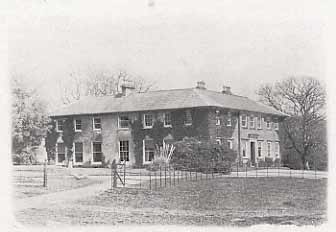
|
| Windsor House | Dominick Sarsfield was living at Windsor, Cork, in 1814 and by 1837 it was the property of J. Martin. Joseph Martin held this house valued at £13.10 shillings from the Earl of Bandon in the early 1850s. Windsor House is still extant and occupied. |

|
| Killahora House | J. Martin is recorded as resident at Killahora in 1837. At the time of Griffith's Valuation John Martin held a house valued at £25 from the Earl of Bandon. A house is still extant at this site. | |
| Union Lodge | This house was the residence of the Reverend William Gifford in 1837. At the time of Griffith's Valuation Hughes Martin was the occupier. He held the property from William Coppinger and the buildings were valued at £21. | |
| Tullagreen | Occupied by Robert Martin in 1814 and by Hughes Martin in 1837. The house was recorded as unoccupied at the time of Griffith's Valuation. Hughes Martin was the immediate lessor and the house was valued at £19+. |

|
| Garrancloyne House | This was the original home of the Coppingers of Middleton. A substantial house with a gate lodge is marked on the first Ordnance Survey map but by the time of Griffith's Valuation the house with the largest valuation in this townland was £2. It was occupied by Hughes Martin and held from William Coppinger.In 1786 Wilson refers to "Killycloyne" as a seat of the Martin family in this area. | |
| Killora Lodge | This house was the residence of Reverend R. Berry [Bury] in 1837 and was unoccupied at the time of Griffith's Valuation. Reverend Robert Bury was the immediate lessor and the buildings were valued at £20. It is still extant and occupied. |

|
| Toureen Lodge/Ashbourne | At the time of Griffith's Valuation the Reverend Robert Bury was occupying a house in this townland valued at £17 and held from the Earl of Bandon. It is labelled Toureen Lodge on the 1st edition Ordnance Survey map and as Ashbourne on the 25-inch edition of the 1890s. In the twentieth century it became famous for its well-known gardens, laid out by Richard H. Beamish. |

|
| Johnstown House | Johnstown was the home of Sarsfield Esq in the 1770s and 1780s. William Martin is recorded as resident at Johnstown in 1814 and Mrs Palmer in 1837. John Courtney occupied the house valued at £21+ in the early 1850s. He held it from the Earl of Bandon. The original house is not extant. | |
| Anngrove | Bence Jones writes that this was originally a Cotter residence, sold to the Earls of Barrymore before the mid 18th century. Dobson Esq was resident in the 1770s and 1780s. By 1814 Francis Wise was resident and was still resident at the time of Griffith's Valuation, when the house was valued at £30 and held from Sir William Clarke. The house was later inherited by the Gubbins family. Demolished post 1950. | |
| Rockville | The Barrys were inhabiting Rockville by the mid 18th century. William Barry was resident in 1814 and his seventh son Thomas Barry in 1837. In the early 1850s Garret Barry was occupying this house which he held from Sir William Clarke. It was valued at £15.15 shillings. | |
| Rossmore | Rossmore was a Coppinger home in the 19th century, the residence of Thomas Coppinger in 1814 and 1837. Thomas Francis Coppinger is recorded as the occupier at the time of Griffith's Valuation when the property, valued at £19, was held from Sir William Clarke. | |
| Barryscourt | Originally a seat of the Barry family, Earls of Barrymore, it had become a Coppinger home by the mid 18th century. Wilson refers to it as the seat of Mr. Coppinger in 1786 and also notes "the castle of Barry's Court". It was the residence of William Coppinger in 1814 and in the early 1850s, when it was held from Sir William Clarke and valued at £22. Following William's death in 1862 this property passed to his nephew Morgan John O'Connell. Bence Jones records it as a ruin but the original medieval castle has been refurbished and is now open to the public. In the 1940s the Irish Tourist Association survey included a description of both buildings. | |
| Sunville | A property held from Francis Wise in the mid 19th century by Thomas Donovan. The buildings were valued at £15.10 shillings. In the 1870s Thomas Donovan of Sunville, Johnstown owned 174 acres in county Cork. | |
| Greenville | Garret Barry, eight son of William Barry of Rockville, occupied this house in the mid 19th century. He held it in fee and it was valued at £17+. He was a racehorse owner and died unmarried. Greenville passed to his nephew Dr William Barry of Rockville and Greenville. Lucy K. Barry was resident in 1906 when the buildings were valued at £34. | |
| Barry's Lodge | Occupied by D. Barry in 1837 and by Henry Barry in the early 1850s. He held the property valued at £28 from Samuel Reeves. | |
| Dundullerick House | Occupied by J[ames] Barry in 1837 and by his son William Barry in the early 1850s. The property was held in fee with 353 acres and the buildings were valued at £26+. William's nephew James William Creagh Barry later purchased Dundullerick. | |
| Dundullerick | This house was occupied by Edmund Barry in the mid 19th century, when it was valued at £16+ and held in fee. Edmond married in 1836 Sarah Isabella daughter of Pierce Creagh of Rockforest Lodge. Their grandson sold Dundullerick to his cousin James William Creagh who took the additional name of Barry. This house appears to have remained in Creagh Barry possession until the 20th century. \in 1906 valued at £19.10 shillings and occupied by Pierce Barry. | |
| Cloneen | Leet records - Hoare esq as resident at Cloneen, Middleton, in 1814. In the mid 19th century Robert Lunham held a house valued at £20+ from Bingham Sarsfield in this townland. Sarsfield held the property from Abraham Devonsher. When Cloneen was advertised for sale in 1870 it was occupied by Joseph Sheedy. Bingham Sarsfield of Cork owned 266 acres in county Cork in the 1870s. A house is still extant at the site. | |
| Curragh | At the time of Griffith's Valuation John Courtenay held a house, offices and gate lodges at Curragh, valued at £28. The first Ordnance Survey map shows a farm yard for Ballyedmond in Curragh. The 25-inch map of the 1890s still indicates extensive farm buildings, together with kennels. Farm buildings remain at the site. | |
| Ballyedmond | Ballyedmond passed through marriage from the Brownes to the Courtenays. Robert Courtney was the proprietor of Ballyedmund in 1814. John Courtenay held Ballyedmond from the Reverend William Halloran in the mid 19th century. The buildings were valued at £199. The seat of Robert Courtney Smith-Barry in 1894. Inherited by the Smith Barrys and sold by them in the 1960s. The house no longer exists but much estate architecture including gate lodges survives. |
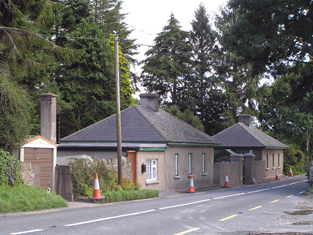
|
| Springhill | This house was a Wakeham home from at least the mid 1770s. William Wakeman was resident at Springhill in 1814 and W.J. Wakeham in 1837. Joseph B. Wakeham held Springhill in fee at the time of Griffith's Valuation when the buildings were valued at £15+. | |
| Ballynona House | The main seat of the Wigmore family, occupied by Richard H. Wigmore in 1814 and R. Wigmore in 1837. Henry Wigmore held the property from Sir Arthur Brooke in the early 1850s when the house was valued at £15+. | |
| Glenwood Lodge | Richard Harding Wigmore occupied a house, flour mill and lodge valued at £30 at this location in the mid 19th century. He held the property from Henry Wigmore. | |
| Ballyvodock | Thomas Wigmore occupied this house in the mid 19th century. He held it from the representatives of Viscount Midleton and it was valued at £9+. | |
| Bilberry Hill | In 1786 Wilson writes that Bilberry Hill was the residence of the late Mr. Drury. It was the home of the Garde family in the nineteenth century, occupied in 1814 by William Garde and in the early 1850s by Winifred Garde. She held the property from Sir A. Brooke and the buildings were valued at £8.15 shilllings. The 25-inch Ordnance Survey map shows a later and larger building labelled Bilberry, which is still extant. |
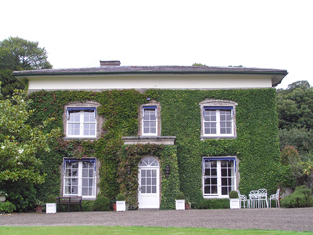
|
| Clashduff | Peter Warner was occupying a house valued at £18 in the townland of Clashduff at the time of Griffith's Valuation. He held this property from Sir A. Brooke. This may be the house recorded by Lewis as Castle View in the parish of Inchinabacky and inhabited by P. Warner. Peter Warner of Clashduff, Middleton owned 205 acres in the 1870s | |
| Brookdale House | A house occupied by Mr Robert Atkins in 1814 and described by Lewis in 1837 as the seat of A. Ormsby. Arthur Ormsby was married to Margaret the sister of Robert Atkins (of Firville). Margaret Ormsby was the immediate lessor of the house in the early 1850s when it was valued at £32 and occupied by John Bull. William Welland was tenant when the property part of the estate of Henry Wigmore was advertised for sale in 1871. | |
| Clonmult | The Powers appear to be associated with Clonmult from the late 17th century. In the first half of the 19th century Pierce Power was resident, the house being valued at £23 in the early 1850s and held from Edward Phayre. A Shaw Smith home in the second half of the 19th century. Louis K. Smyth is recorded as the occupant in 1906 when the buildings were valued at £16. 15 shillings. |
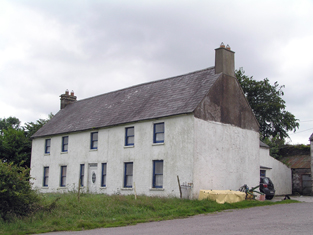
|
| Young Grove | Mrs Foulke was resident in 1814 and C. Foulke in 1837. At the time of Griffith's Valuation John Turpin held the property in fee and the buildings were valued at £50. Margaret T. Turpin was resident in 1906 when the buildings were valued at £45.10 shillings. | |
| Roxborough | Wilson, writing in 1786, refers to "Rocksborough" as the seat of Mr. Ball. The residence of Bent Ball in 1814 and of - McSweeny in 1837, this house was unoccupied in the early 1850s when it was valued at £22. The immediate lessor was Sir A. Brooke. The house has disappeared by the time the 25-inch Ordnance Survey map was published in the 1890s and the Youghal branch of the Great Southern & Western railway constructed close by. | |
| Ahanesk | A house on the shore of Cork Harbour occupied by William Oliver Jackson at the time of Griffith's Valuation and held by him in fee. It was valued at £24. In 1906 a mansion house in the townland of Ballyvodock East was valued at £98. The house passed by marriage to the Sadlier Jackson family and in the mid 20th century became the home of the Lomers. |
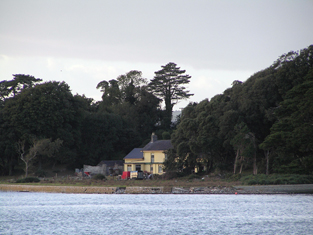
|
| Ballyvodock House | James Barry was living at Ballyvodig House, Middleton, in 1814. In the mid 19th century William Kelleher was the occupier. He held the property from William Oliver Jackson and the buildings were valued at £11. A house and large farm are still extant at the site. | |
| Ballintubbrid House | Ballintobrid, Middleton, was the home of William Weekes in 1814. By 1837 it was the home of the Heard family and occupied and held by Edward Heard in fee at the time of Griffith's Valuation. The house was valued at £13. The original house is not extant. | |
| Stumphill | This house was the home of William Mc O'Boy in the first half of the 19th century. The house was valued at £25 at the time of Griffith's Valuation and held from Henry Newenham. |
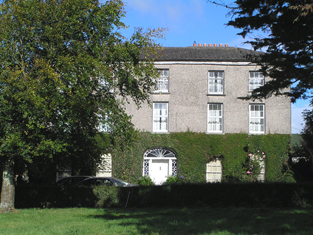
|
| Ballyannan | The Brodricks first occupied Ballyannan Castle, a fortified house in the townland of that name, which was in ruins by 1837. In 1786 Wilson refers to Ballyanan"belonging to Lord Viscount Midleton". On the first Ordnance Survey map there is a building named Ballyannan House (W867 715) right on the shore close to the castle and there is a house in the townland of Garryduff named Ballyannan. Ballyannan was occupied by Roger Adams in 1814 and by J. Adams in 1837. At the time of Griffith's Valuation the representatives of Viscount Midleton occupied a house and offices valued at £19 in the townland of Garryduff. The house in the townland of Ballyannan was valued at £9.10 shillings and was occupied by Daniel Twomey and held from the Viscount. | |
| Caherduggan | In 1786, Wilson refers to "Carduggan" as the seat of Mr. Davis. Denis O'Callaghan was living at Cadogan (Caherduggan) by 1837. He held the property in fee at the time of Griffith's Valuation when it was valued at £48. This house remained in the possession of the O'Callaghan family until the 20th century. It is still extant but unoccupied. |

|
| Ballytrasna House | No house with demesne is marked on the first Ordnance Survey map in this townland but by the time of Griffith's Valuation Timothy O'Regan was occupying a house and other buildings valued at £19+ which he held from John Courtenay. Farm buildings are still extant at this site. A property labelled Ballytrasna House is shown on the 25-inch map of the 1890s, located in the next townland of Glenawillin [W876796]. This property was also being leased by O'Regan from the Courtenay estate at the time of Griffith's Valuation, when it was valued at £5+. However, it had become a more substantial property by the 1890s. A house is still extant at the site. | |
| Leadinton | The home of the Atkin family for most of the 18th and 19th centuries. In 1786 Wilson refers to it as the seat of Mr. "Arkin". Valued at £16.15 shillings at the time of Griffith's Valuation, it was occupied by the Reverend Joseph Wright and held from J.T. Atkins Swanne. | |
| Brooklodge House | A house and paper mill valued at £30 held by Mary Eliza Phair from the Reverend Robert Bury at the time of Griffith's Valuation. This Phair family were involved in paper mills in a number of townlands in this locality. | |
| Brookville | Home of Cornelius O'Callaghan who held it from the Reverend Robert Bury in the mid 19th century. The buildings were valued at £35. |

|
| Blossomgrove | Blossomgrove was the residence of William Casey in the early 1850s. He held the house valued at £22 and 335 acres from Simon Dring. A house is still extant at the site. | |
| Corbally | ''Burke's Irish Family Records'' describes the Sheehys of Corbally House from about the late 18th century. In the mid 19th century the house was occupied by William J. Sheehy, second son of Bryan Sheehy of Corbally House, died 1806. The buildings were valued at £27 and the property was held from the Reverend Edward Newenham. This house was named 'Mill View' on the first Ordnance Survey map. Mill View was still occupied by Sheehys when it was advertised for sale in 1871. | |
| Maryborough | The sale rental for the Mannix estate states that this house was built in 1816 at a cost of £3,000. Occupied by J. Wallis in 1837 and by Henry Mannix in the early 1850s. Mannix held the property from the representatives of the Reverend Robert Dring and the buildings were valued at £28. |

|
| Rockgrove | The seat of the Dring family in the 18th and 19th centuries, valued at £50 in the early 1850s. Bence Jones writes that it was sold by the Drings in the early 20th century, valued at £80 in 1906, and was restored in the 1970s. The house is now used as offices. |
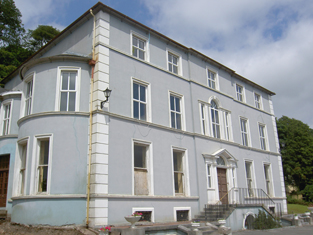
|
| Marino | The present house was built on the foundations of an earlier house which was burnt in the 1860s. Wilson refers to this earlier house on Great Island as the seat of Savage French in 1786. Marine remained the home of a branch of the French family and sold by Colonel Stuart French in the early 1970s. The National Inventory of Architectural Heritage entry states that this house was previously the home of the mathematician Philip Ronayne. Valued at £32 in the early 1850s it was occupied by Thomas G. French who held the property from Thomas R. Sarsfield. Knight writes that Thomas Sarsfield of Doughcloyne leased the lands of Ronayne's Grove, otherwise Hodnet's Wood, otherwise Marino to Savage French in 1755. Thomas G. French is also recorded as the occupier in 1814 and 1837. |

|
| Kilcoolishal | Thomas Martin occupied a house valued at £18+ in this townland at the time of Griffith's Valuation. He held it from W. B. Hoare. | |
| Factory Hill | The seat of a branch of the Hoare family in the 18th and 19th centuries. Occupied by E. Hoare in 1814 but by 1837 leased to William Letchfield or Lichfield. He occupied the house in the early 1850s when it was valued at £25. Richard Martin of Factory Hill owned 506 acres in county Cork in the 1870s. A larger property, known as Dunsland House, occupies the site of Factory Hill on the 25-inch Ordnance Survey map of the 1890s. This latter property was later the residence of Joseph Pike and was burnt in August 1920 during the War of Independence. |

|
| Glenburn | Glenburn was occupied by A. Lewis in 1837 and was held in fee by John T.C. Gibbings at the time of Griffith's Valuation. The buildings were valued at £20.15 shilllings. |

|
| Annmount | In the 1770s Falkiner Bart was resident and in 1786 Wilson refers to Annemount as the seat of Sir Riggs Falkiner. Occupied by the Reverend Mr Coghlan in 1814 and in 1837. By the time of Griffith's Valuation Nicholas M. Cummins held this house from the Reverend Coghlan. This house was burned down and all that now remains are the steps. |
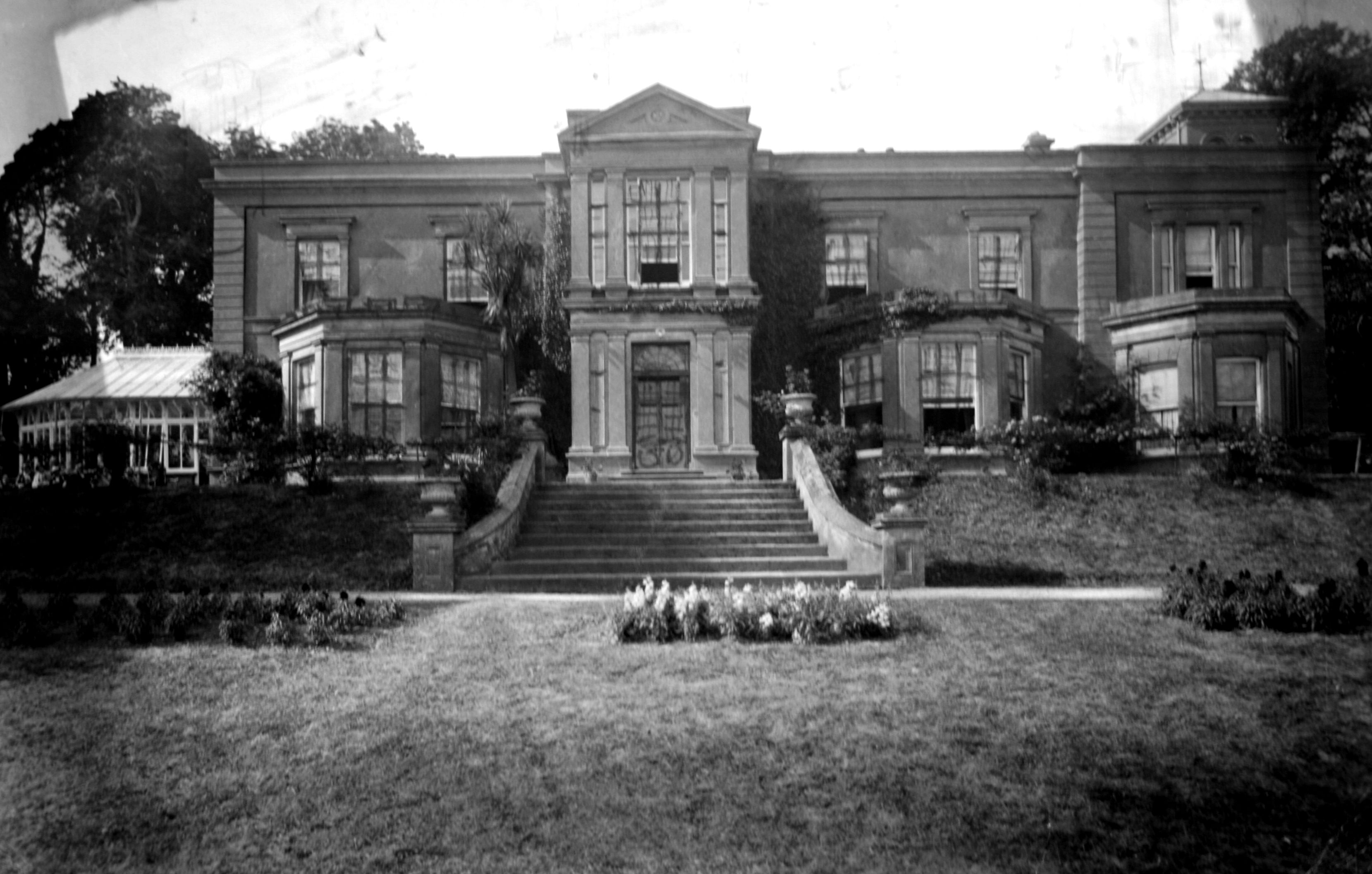
|
| Ashton Grove | This house is marked Ashton Grove on the first Ordnance Surve map. John Cotter was the proprietor of Ashton, Cork, in 1814 and T. Cleary of Ballingohig in 1837. Thomas J. Cleary held the property from Henry Braddell at the time of Griffith's Valuation when the buildings were valued at £22. Cleary held a cornmill from Braddell in the townland of Kilrussane. James Fitzgerald held 122 acres of untenanted land and buildings valued at £26+ in 1906. |
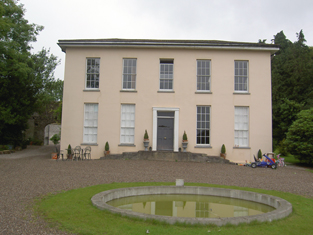
|
| Rock Farm | The home of John Cantillon in 1837 and in the early 1850s when it was valued at £16 and held from Warren Hastings Rowland Jackson. | |
| Carrigrenan | Occupied by J. M. Ashlin (father of the architect George Ashlin) in 1837 and by the Reverend Robert Bury in the early 1850s. He held the house valued at £37 from Warren H. R. Jackson. The home of the Sullivans in the 20th century. | |
| Castleview | A Jackson property which was unoccupied in 1837. By the time of Griffith's Valuation Robert Delacour Beamish was resident in the house valued at £34 which he held from the Jacksons. The house was sometimes known as Ditchley House. Now functions as the Radisson Hotel, Little Island. |

|
| Little Island House | A Bury residence, occupied by Richard Bury in 1814, by Phineas Bury in 1837 and by his widow Eliza at the time of Griffith's Valuation. The house was valued at £51 and held from the Earl of Limerick. Bence Jones wrote n 1978 that the house was a ruin and the site is now occupied by industrial buildings. | |
| Flaxfort | Occupied by R. Martin in 1837 and by Mary Anne Martin at the time of Griffith's Valuatioan. The house was valued at £21 and held from John Purcell. It is no longer extant. |
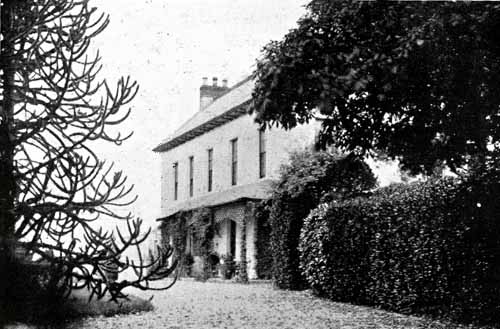
|
| Inchera | This house, also known as Sun Lodge, was the home of the Oliver family. Occupied by S. Oliver in 1814 and Silver Charles Oliver in 1837 and in the 1850s. The buildings were valued at £54 and the property was held from the Reverend Rowland Davis Gray. Owned by C.E. Murphy in the first half of the 20th century. Post 1950 it was destroyed by a fire. | |
| Ashgrove | A branch of the Rogers family was located at Ashgrove in the early 18th century. Described by Bence Jones as a late Georgian house built for Councillor Franklin by Abraham Hargrave and now a ruin. In 1810 Townsend referred to the new house of Richard Frankland "built in the best modern style". It was occupied in 1814 by Mrs Franklan and in 1837 by R. Frankland. Richard Frankland held the property in fee at the time of Griffith's Valuation when the buildings were valued at £32. |

|
| Bennett's Court | The Bennetts were resident at Ballymore from the 18th century but this house dates from about the 1840s. At the time of Griffith's Valuation it was the residence of Joseph H. Bennett who held it in fee. The buildings were valued at £41. Owned by a religious order in the 20th century and now in use as a medical clinic. |

|
| The Priory | A house valuled at £17+ at the time of Griffith's Valuation and held by the Reverend Francis Newport from Joseph H. Bennett. The Reverend Newport's daughter married J. H. Bennett's nephew in 1865 and they eventually inherited Bennett's Court. |

|
| Ballymore House | The Hare family, Earls of Listowel, also held land in the townland of Ballymore in the 19th century. In 1814 the proprietor of Ballymore was the Honourable Mr Hare. In 1837 J.H. Bennett was resident at Ballymore House. This house appears to have been in the possession of the Honourable Robert Hare at the time of Griffith's Valuation when it was held from Joseph H. Bennett and valued at £15+. Robert Hare was a younger brother of the 2nd Earl of Listowel and married in 1840 Louisa French of Marino. Their son Robert Dillon lived at Ballymore. In 1906 John C. Bennett is given as the occupier and the mansion house was valued at £65. Bence Jones writes that post 1950 owners include the O'Donovans and Hecketts. |
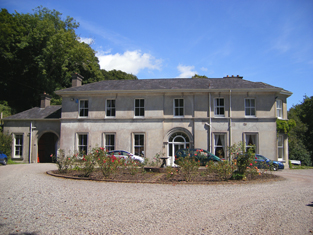
|
| Belgrove | A house possibly inherited by the Bagwells through marriage with the Harpers. The residence of J. Travers in 1814 and of the Reverend G. Gumbleton in 1837 and in the early 1850s. The Reverend Gumbleton held the property from John Bagwell and it was valued at £36. Bence Jones writes that William Gumbleton, son of the Reverend, lived in this house under 1911. The house was demolished in the mid 20th century and a new building erected. | |
| East Grove | Bence Jones writes that this early 19th century house was built by Dorcas Bousfield, daughter of William Bagwell and his wife Jane Harper. After her death it was inherited by the Bagwells and remained in their possession until the mid 20th century. In 1837 John Bagwell is recorded as the proprietor of East Grove and also in the early 1850s, when the property was valued at £40 and held from the representatives of Viscount Midleton. In 1942 the Irish Tourist Association Survey noted that it was the residence of Major Bagwell and the adjacent grounds contained the remains of buildings thought to be "the now-unknown castle of Ballinakilla". 20th century owners included Lorretta Brennan Glucksman, and the Kelly family, musicians. In recent years it has been offered for sale. |

|
| Cuskinny | A French home from the early 19th century, occupied by Savage French in 1814 and by his son Savage T.W. French in 1837 and in the early 1850s. The house was then valued at £32 and held from Bartholomew Verling and Thomas R. Sarsfield. IN 1894 Slater noted it as the seat of S. French. This property was still in the possession of the descendants of the French family in the 1970s. |

|
| Dromdihy | The building of this house was completed in 1833 for Roger Green Davis. He is recorded as the occupier in the early 1850s holding the house valued at £45 from Sir Arthur De Capell Brooke. The sale rental of 1863 gives a detailed description of this house - "Drumdiah House consists of a centre and two wings, ornamented with Doric columns and with a portico at the eastern end, by the hall is entered, and off which are hot, cold, vapour and shower baths. The first floor comprises five sitting-rooms; on the second floor are four best bedrooms, with dressing-rooms and water-closet......". In the 1940s the Irish Tourist Association Survey reported that the house had been "destroyed in the Troubles". It is now a ruin. |
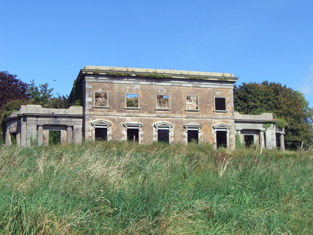
|
| Gortnagappul | This area is marked as the farmyard of Aghadoe House on the first Ordnance Survey map. At the time of Griffith's Valuation a house and offices valued at £28 were held by Roger G. Davis from Richard Uniacke Bailey. A large farm complex exists at the site now. | |
| Aghadoe House (Killeagh) | Lewis writes in 1837 that “The present house is about to be replaced by a castellated mansion”. The earlier house is referred to by Wilson in 1786 as the seat of Simon Dring. Aghadoe wasccupied by Thomas M. Green at the time of Griffith's Valuation. The house, valued at £27, was held by him from Sir Arthur De Capell Brooke. The house is no longer extant. | |
| Mount Uniacke | A home of the Uniacke family in the 18th and 19th centuries, occupied by three generations of persons named Norman Uniacke in the 19th century. Earlier, in 1786, Wilson refers to it as the seat of James Uniacke. In the mid 19th century it was held by Norman Uniacke in fee and the house was valued at £30. The Irish Tourist Association Survey of the 1940s reported that it had been burnt in 1921 and it is no longer extant. | |
| Mountbell | In 1786 Wilson refers to Mount Bell as a residence of the Garde family. It was ccupied by Edmund MacKey in 1814 and by Edward Lane in the early 1850s. Lane held the house valued at £10 from Sir Arthur De Capell Brooke. A house and large farm are still extant at the site. | |
| Ballygeany | Marked as Ballygeanymore House on the first Ordnance Survey map. Valued at £15, occupied by John Nason and held from the representatives of Viscount Midleton at the time of Griffith's Valuation. This house is still a residence. |

|
| Hadwell Lodge | Lewis records the Reverend Dr Austen as resident at Hadwell in 1837 [this may have been the nearby glebe house] and J. Penrose at Hadwell Lodge. In the early 1850s the Reverend Robert Austin occupied Hadwell Lodge. It was valued at £50 and held from William Gearin. By the 1890s this property had become known as Hadwell House. It is described as "in ruins" on the 1940 edition Ordnance Survey map. | |
| Aghada | J. Roche occupied this house in 1837. He built Aghada House and had a daughter who married [Henry] O'Brien of Whitepoint and they had a daughter who married her cousin William Roche. William Fitzgibbon was resident at Aghada House at the time of Griffith's Valuation when the house was valued at £35 and held from Henry O'Brien. It was the seat of William de Wilton R. Thackwell in 1894. http://www.archive.org/stream/barrymorerecords00barr/barrymorerecords00barr_djvu.txts | |
| Whitegate House | In 1786 Wilson refers to Whitegate as the seat of Thomas Travers. It was the home of Mrs Gertrude Fitzgerald (nee Blakeney Lyon), wife of Robert Uniacke Fitzgerald, in 1837 and at the time of Griffith's Valutaion when it was valued at £25 and held from Robert U. P. Fitzgerald. The property passed in the mid 1850s to the niece of R.U. Fitzgerald, Anne Penrose, who was married to Thomas Stewart. Still extant and occupied. |
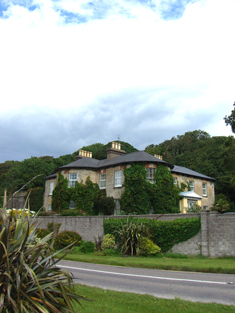
|
| Maryland House | The residence of Joseph Haynes in 1837 and the early 1850s, held by him from William Player at the time of Griffith's Valuation and valued at £20. A cornmill was located closeby. Maryland is no longer extant. | |
| Rose Hill | At the time of Griffith's Valuation Alexander McNab held Rose Hill House valued at £15 with 120 acres from the Marquess of Thomond. The National Inventory of Architectural Heritage shows a house at this location dating from the 1890s. |
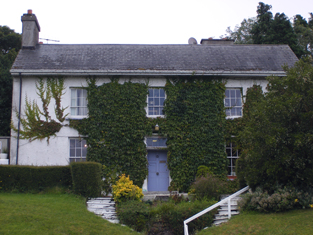
|
| Jamesbrook Hall | The home of the Adams family, occupied by Michael Go[o]ld Adams in 1814 and by Richard W. G. Adams in 1837 and in the early 1850s when the house was valued at £60 and held from the Marquess of Thomond. Occupied by William R. G. Adams in 1906. Recently renovated and restored. |

|
| Rostellan | Seat of the Marquess of Thomond, occupied by him in in 1786 (Lord Inchiquin. It was at £79 in the early 1850s. Bought by Dr T.A. Wise after the Marquess's death in 1855, a lithograph of the house is included in the sale rental. Subsequently purchased by Sir John Pope Hennessy and mentioned by Slater as the residence of Lady Pope Hennessy in 1894. Occupied by Charles J. Engledew and valued at £112 in 1906. The Irish Tourist Association survey noted in the early 1940s that the roof and fittings had recently been removed and the land taken over by the Land Commission. No trace of the house remains now. |

|
| Kilbree | Kilbree belonged to the Boles family at the beginning of the 18th century. It became the residence of a branch of the Adams family in the late 18th and 19th centuries, occupied by S.W. Adams in 1837. The house was valued at £33 in the mid 19th century and held from Dorothea and William Boles. |
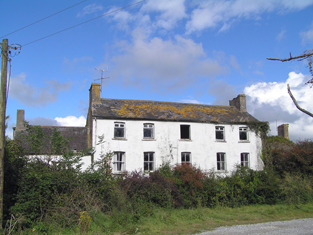
|
| Mosestown | In 1786 Wilson notes a house on the left of Whitegate as the seat of Charles Allen. This may refer to the house labelled "Mosestown House" on the 1st edition Ordnance Survey map. At the time of Griffith's Valuation it was occupied by Edmund Roche, son of Francis Roche of Rochemount. The house was valued at £21 and held from Edmond B. Roche. Edmund was a distinguished soldier rising to the rank of Major General and married Anna Matilda, daughter of the Reverend Austen, of Hadwell Lodge. In 1894 Slater recorded a house known as Ballymonis as the seat of General Edmund Roche. Mosestown is labelled Ballymonis on the 25-inch Ordnance Survey map of the 1890s. It is no longer extant. | |
| Rochemount | The residence of a junior branch of the Roche family in the 19th century. Occupied by Francis Roche in 1814 and by John Webb Roche in 1837 and the early 1850s when the buildings were valued at £30. He held the property in fee. In 1894 Slater notes Rochemount as the seat of Francis W.A. Roche. There are still buildings extant at this site. | |
| Ballybane | [Leet records George Gaggin of Ballybawn, Buttevant, county Cork in 1814.] Ballybane was occupied by T. Gaggin in 1837 and by William Gaggin in the early 1850s. The house was valued at £22 and held from Laurence Corban. This house was recently renovated. |
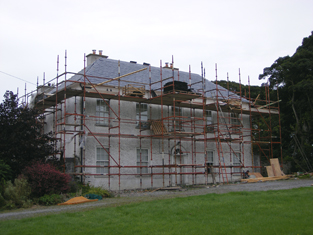
|
| Barnabrow | This house was the residence of Timothy Lane in 1814. Located on the Thomond estate and occupied by William G. Fitzgerald who held the property from John [Royal] Wilkinson at the time of Griffith's Valuation. The buildings were valued at £28. A lithograph of this house is included in the sale rental of the Thomond estate 1857. The representatives of Edward de l'E. Litton were recorded as the occupants of this house in 1906. The house now functions as a guest house. |

|
| Cloyne House | Originally the Bishop's Palace, by 1837 it was known as Cloyne House and occupied by H. Allen. Valued at £50, occupied by John Wilkinson and held from the Ecclesiastical Commissioners at the time of Griffith's Valuation. |
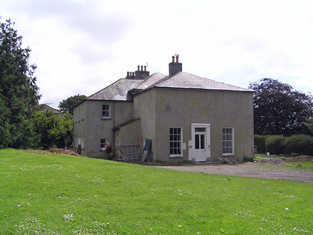
|
| Kilboy/Keil Bui | Marked as Keil Bui in the townland of Kilboy on the first Ordnance Survey map, occupied by Lewis Gibson in 1814 and by John Gibson in the early 1850s who held the property in fee. The buildings were valued at £25. This house is described as a former deanery in the National Inventory of Architectural Heritage and is now in use as a private residence. |

|
| Kilcrone | An early 18th century house, the home of the Hannings in the first half of the 19th century, held by him from Mountifort Longfield at the time of Griffith's Valuation when valued at £30. The sale rental of 1858 records William G. Fitzgerald as the occupant of this house on a temporary basis. This house is occupied and well maintained. |
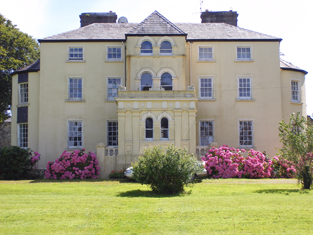
|
| Lindsey Cottage | Marked on the first Ordnance Survey map as Lindsey Cottage. At the time of Griffith's Valuation it was occupied by John Litton who held it from the Bishop of Cork, Cloyne and Ross. The buildings were valued at £20. | |
| Sunville | This house was the residence of Captain Durdin in 1814 and of Major Kane in the early 1850s who held it with 2 acres from Michael Connor who was leasing from Thomas G. Durdin. The house was valued at £12.10 shillings. This house was included in the Durdin estate sale of June 1855. The ruins of this house and a walled garden are situated behind a modern house. | |
| Ballyre | This house was occupied by Crofton Uniacke at the time of Griffith's Valuation when it was valued at £29.15 shillings and held from Mountifort Longfield. Earlier, in 1786, Wilson refers to it as the seat of Crofton Uniacke. The home of Robert M. Bayly in the 1870s. It is still extant. |
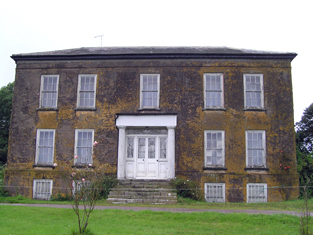
|
| Castle Mary | An 18th century house, remodelled as a castle in the 19th century, home of a branch of the Longfield family. In 1786 Wilson give a description of the house including that "the west front of this mansion presents a view of Cork Harbour". Valued at £85 in the mid 19th century and held by Mountifort Longfield in fee. Bence Jones writes that this house was burnt in the early 1920s and is now a ruin. A new house was constructed from the old stable courtyard and the family continued to live there for periods of time during the 20th century until Castle Mary was acquired by the Hurley family in 1978. |
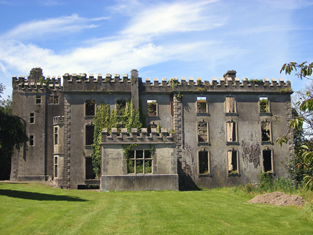
|
| Glengarra | Occupied by Robert Dring in the early 1850s, valued at £25 and held from Robert Uniacke. Still extant and occupied. |
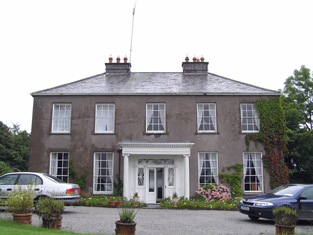
|
| Rathcoursey House (East) | At the time of Griffith's Valuation a house in Rathcoursey East valued at £18 was held by Richard Lyons from the Provost and Fellows of Trinity College, Dublin. This house is still a residence. |

|
| Rathcoursey House (West) | Home of the Smith family in the 18th and 19th centuries. John Tynte Smyth lived here in the 1770s. Occupied by John Smith in 1814 and John J. Smyth in the early 1850s. The house was valued at £35 and held from the Marquess of Thomond with 214 acres. It is now run as a guest house. |

|
| Ardavilling | The National Inventory of Architectural Heritage dates this house circa 1860. It was the home of John Litton who left it to his nephew Edward F. Litton. At the beginning of the 20th century occupied by Guildford William Jack Stacpoole of the Ballyalla, county Clare, family. |
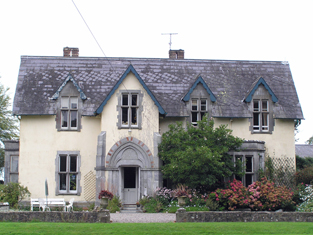
|
| Carewswood | Inhabited by the Dowager Countess of Shannon in 1814 and by the Reverend J. Leslie in 1837. By the time of Griffith's Valuation this house valued at £40 was in the possession of Edward Garde who held it from the Earl of Shannon. A house is still extant at the site. | |
| Ballynacorra | An 18th century house, occupied by John Garde in 1814 and by Thomas Garde at the time of Griffith's Valuation, who held the building valued at £40 from the Earl of Shannon. Still in use as a residence. | |
| Broomfield | A home of the Garde family in the second half of the 18th century. The residence of D. Humphreys in 1837 and of William Humphreys in the early 1850s. At this time the house was valued at £30 and held from the representatives of Viscount Midleton. This house is still in use as a residence. |

|
| Clonmaine | At the time of Griffith's Valuation William Abbot held this house valued at £15 from Robert U.P. Fitzgerald. |
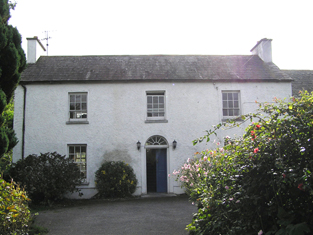
|
| Lisquinlan | A Fitzgerald home, occupied by Robert A. Fitzgerald in 1814. The Reverend C. Harte was the resident in 1837 and the house was unoccupied in the early 1850s when it was valued at £33. Buildings are still extant at this location but the house is in ruins. | |
| Knockane | A Garde home in the early part of the 19th century, Dr T. Garde was resident in 1837. Unoccupied at the time of Griffith's Valuation when valued at £14. Richard and Henry Pratt were then the immediate lessors from the Earl of Shannon. |

|
| Ballymaloe | William Abbot was resident at Ballymaloe in 1814. It was described by Lewis in 1837 as a "very curious old house, built by the Fitzgeralds and forfeited in the war of 1641, it is now the property of Mr Forster" . By the early 1850s John Litchfield [Lichfield] was resident holding the house valued at £48 from Mountifort Longfield. It was the seat of William Lichfield in 1894. It is now the home of the Allen family who run it as a guest house with adjacent shop. Their renowned cookery school is nearby. see http://www.ballymaloe.ie/ |
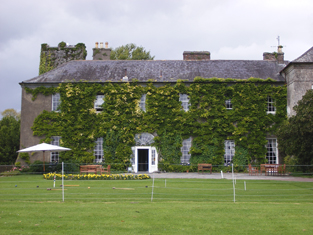
|
| Rockview (Inch) | In 1837 Lewis refers to the "very pretty residence of Mr Fitzgerald" proprietor of the extensive limestone quarries at Carrigacrump. The house was named Rockview on the first Ordnance Survey map. Teresa Fitzgerald was the occupier in the early 1850s holding the property from Colonel William H.M. Hodder, the buildings were valued at £15. Teresa Fitzgerald (nee Coppinger of Rosmore) married James Fitzgerald and they had a son Maurice and daughters Teresa, Mary etc see ''The Barrys of County Cork''. Margaret Fitzgerald of Carrigacrump owned 83 acres in the 1870s. Her estate at Rockview was advertised for sale a number of time in the mid 1870s. There is still an extant house at the site. | |
| Shanagarry | A house occupied by Thomas John Keane from at least 1837. At the time of Griffith's Valuation the buildings were valued at £16 and held from Peter Gaskell. T.J. Keane's representatives were still resident in the 1870s. Part of Shanagarry, the estate of Thomas John Keane, was advertised for sale in November 1876 and June 1877. In January 1881 this house and 58 acres was for sale again. The house had "hot and cold water laid through it". This house is still a family residence. |
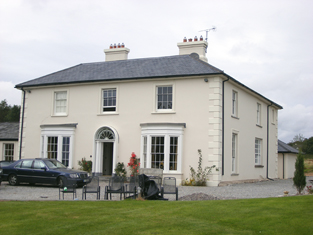
|
| Kinoith | Occupied by William G. Fitzgerald at the time of Griffith's Valuation, valued at £8 and held from Peter P. Gaskell. Occupied by the William Strangham in the first half of the 20th century. This house is now the home of Tim and Darina Allen of the famous Ballymaloe Cookery School. |
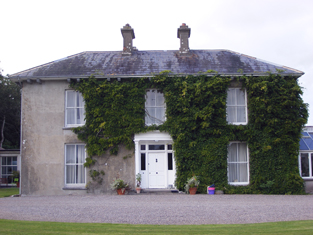
|
| Shanagarry Castle | A tower house with additions, mainly associated with the Penn family. Probably the building occupied by Warham Durdin in 1814. At the time of Griffith's Valuation Thomas Durdin was in possession of most of this townland. In 1942 the Irish Tourist Association Survey referred to the Penn connection and stated that the house was then in the possession of the Brazier family. |
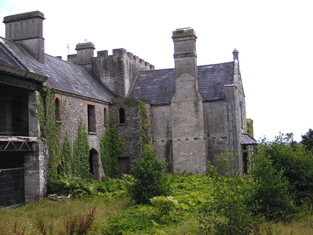
|
| Ballyedekin | A house valued at £20 at the time of Griffith's Valuation, occupied by John Leech and held from the representatives of Viscount Midleton. Buildings are still extant at this site. | |
| Butlerstown | Daniel Keane lived at Butlerstown in the early 1850s. The buildings were valued at £15 and held from the representatives of Viscount Midleton. This house is now a ruin. | |
| Violet Hill | Occupied by Jonas Smyth at the time of Griffith's Valuation and held by him from Henry Cornelius. The buildings were valued at £12. This house is still extant and occupied. |
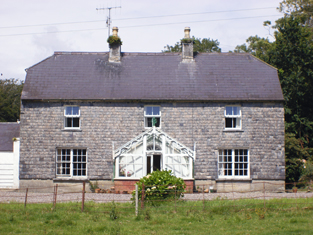
|
| Lakeview | Located on the southern outskirts of Midleton town, Swithin Fleming is recorded as the occupier of this house on the Midleton estate and 12 acres from at least 1837 until the 1870s. In the mid 19th century it was valued at £14. | |
| Dunsfort | Occupied by Richard Adams in 1814 and by Laurence Smithwick at the time of Griffith's Valuation when valued at £20 and held from the representatives of Viscount Midleton. Only the farm buildings appear to be shown on the 25-inch map of the 1890s. | |
| Killeagh | A house on the Midleton estate occupied by W. Welland in 1837 and Henry Welland at the time of Griffith's Valuation. He held the house valued at £40 with 427 acres. William Welland of Brooklodge, Middleton, owned 185 acres in the 1870s. This house now known as Westpark House is still a family residence. |

|
| Loughatalia | A house valued at £20 was occupied by William Humphreys at Loughatalia in the mid 19th century. He held the property with 34 acres from Henry Garde. This house now functions as a guest house known as Lochcarrig. |
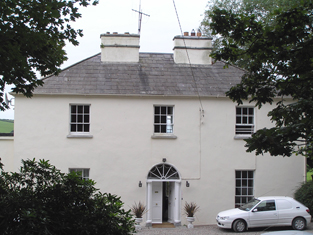
|
| Ballindinis | Ballindinis was associated with the Garde family in the 18th century. The house is marked on the first Ordnance Survey map and was occupied by the Reverend Maurice Hewson in the mid 19th century, when held from Sophia Bellew and valued at £16. A house is still extant at the site. | |
| Castletown | The home of James Uniache in 1814 and of Norman Uniacke in 1837. Robert Uniacke held the property in fee at the time of Griffith's Valuation when it was valued at £20. In 1786 Wilson also refers to it as the seat of James Uniacke. This house was a ruin at the beginning of the 21st century but the National Inventory of Architectural Heritage refers to its restoration. |
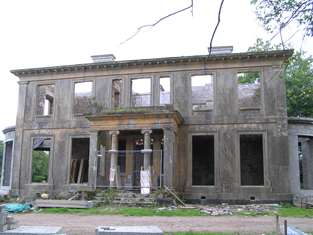
|
| Springfield | The home of a branch of the Boles family in the 19th century, occupied by John Boles in 1814 and the Reverend William Boles in 1837 and in the early 1850s. The house was valued at £16 and held from Foulke S. Greville. Spotiswood Boles of Springfield owned 540 acres in county Cork in the 1870s. In 1906 occupied by William Bowles. The house was derelict in the early 21st century. |
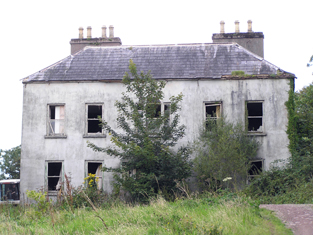
|
| Woodview | A house marked on the first Ordnance Survey map and occupied in 1837 by the Reverend J.P. Lawless. Valued at £18 at the time of Griffith's Valuation, occupied by the Reverend John L. Pyne and held from Mountifort Longfield. The location appears to be occupied by farm buildings now. | |
| Berry Hill | A house occupied by George Scott at the time of Griffith's Valuation, held from James Morrough and valued at £14. The home of Patrick Ronayne in the 1870s. This house is still a residence. |

|
| Ballynoe House | A house occupied by Abraham Hargreave in 1837 and at the time of Griffith's Valuation, held from James H.S. Barry and valued at £14.15 shillings. Abraham Hargrave owned 36 acres at Ballynoe in the 1870s. Later owned by the Murphy family. This house is still extant and occupied. |

|
| Carrigshane | Thomas Smithwick held a house valued at £15 with 44 acres from the representatives of Viscount Midleton at the time of Griffith's Valuation. This may be the property mentioned by Wilson as "Carrig" in 1786, a seat of the Uniacke family. Buildings are still extant at this site. | |
| Cahermone | Wilson, writing in 1786, refers to Cahermone as the seat of Charles Broderick. The house was the residence of Thomas Poole in 1814 and in 1837. Lewis states that Poole was agent to the Midleton estates. Laurence Smithwick occupied the house at the time of Griffith's Valuation when it was valued at £8. Though buildings there were vallued at £19 in 1906 the original house is not shown on the 25-inch Ordance Survey map of the 1890s. Farm buildings occupy the site now. | |
| Kilboy | Francis Rowland was resident in 1837 and at the time of Griffith's Valuation, when the house was valued at £35 and held from Wallis Adams. It is now a ruin. | |
| Castlerichard | Occupied by Richard Fitzgerald in 1814 and in 1837. This house was unoccupied at the time of Griffith's Valuation and held by Thomas John as immediate lessor. It was valued at £9. Advertised for sale in 1858 as part of the estate of Bowles, John and others. This early 18th century house, with the old tower house nearby, is still extant and occupied. |

|
| Casino | Mrs Hyde was residing at Cassina, Castlemartyr in 1814 and in the early 1850s it was occupied by Wallace Adam Walker who held the property from the Earl of Shannon. The buildings were valued at £20. W.A. Walker was still resident in the 1870s. This house is still in use as a residence. |
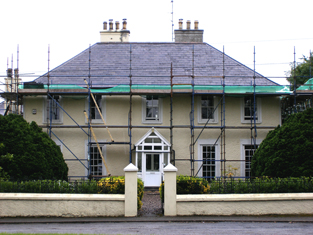
|
| Monkstown Castle | Built by a Mrs Archdeacon in the 17th century, Monkstown Castle was the home of the Shaw family in the 19th century and held from the de Vesci family. In the early 1850s Robert Bernard Shaw was resident and the buildings were valued at £54. In the possession of the Monkstown Golf Club for much of the 20th century, Further information on the building's construction is available at https://www.logainm.ie/ga/9588. |
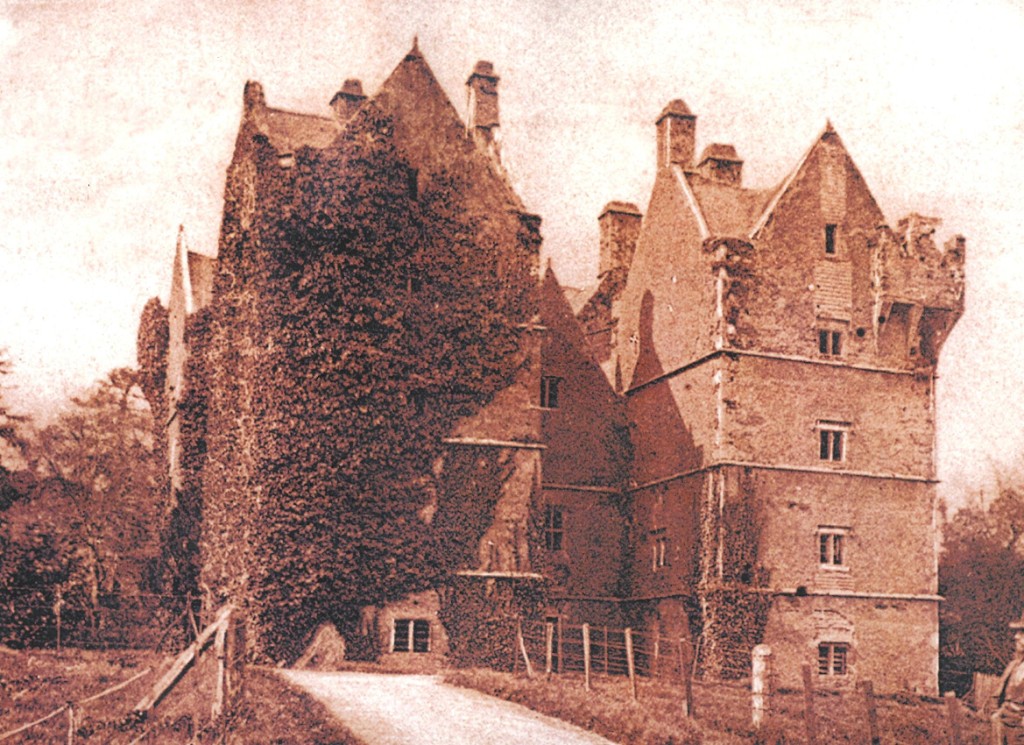
|
| Waterview (Passage West) | Leased by Richard Neville Parker from Lord deVesci's estate at the time of Griffith's Valuation when it was valued at £76. Waterview was offered for sale in the Landed Estates Court by Parker's widow, Hannah Maria, in September 1874. Waterview is still in use as a residence. | |
| Bellevue (Passage West) | In 1850, Nicholas Parker was leasing this property from the deVesci estate when it was valued at £33 10s. It is shown on the 25-inch Ordnance Survey map of the 1890s in a much enlarged form but was subsequently demolished to make way for the terrace of houses which now occupies the site. | |
| Ring View | Ring View was being leased by Robert Baily from the deVesci estate at the time of Griffith's Valuation, when it was valued at £18 10s. A house is still extant at the site. | |
| Rock Cottage (Passage West) | Catherine Parker was leasing this property from Thomas Boland in 1850 when it was valued at £36 10s. A house is still extant at the site. | |
| Lackaroe House | In 1850, Catherine Anne Parker was leasing this property to Cornelius Hawkes when it was valued at £21. A house still exists at this site. | |
| Rock Ville (Passage West) | Mrs. Anne Taylor was leasing Rock Ville from the Parker estate at the time of Griffith's Valuation, when it was valued at almost £25. Lewis refers to it as the seat of J. Taylor in 1837. It is still extant and occupied. |

|
| Rockenham | In 1850 Thomas Parsons Boland was leasing this house to Noble Johnson, when it was valued at £100. Lewis refers to it as Johnson's seat in 1837. The National Inventory of Architectural Heritage suggests it was built by the Johnsons in the 1820s. It is still extant and occupied. |
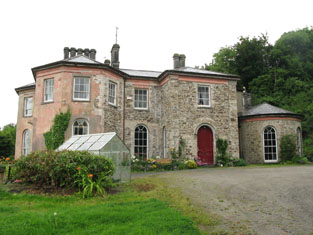
|
| Pembroke | The seat of Thomas Parsons Boland in 1837. Held in fee by him at the time of Griffith's Valuation, when it was valued at £48. Pembroke, together with many other of his houses, was included in the Sale Notice of Boland's estate in November 1859. It was offered for sale again in May 1868 when the house was noted as having "lofty and spacious rooms". In 1786 Wilson refers to Pembroke Town as the seat of Mr. Boland. In 1943 the Irish Tourist Association Survey noted that the Duke of Wellington was supposed to have stayed at Pembroke prior to embarking for the Peninsular wars. The house is no longer extant and a housing development has been built on the site. | |
| Horsehead | In 1850, Horsehead was being leased by James Craig from William Lane and was valued at £60. In November 1859 it was offered for sale as part of the Boland estate. Lewis refers to it as the seat of S. Lane in 1837, "an elegent mansion in the Tudor style". In 1943 the Irish Tourist Association Survey noted that the horses of the Duke of Wellington's cavalry had grazed on the front lawn at Horsehead prior to embarking for Europe. It is still extant and occupied. It was offered for sale in 2024. |
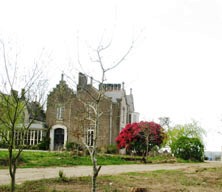
|
| Horsehead Cottage | Held from Thomas Boland's estate by Samuel Abbott in 1850 when it was valued at £38 10s. It was included in the sale of the estate in November 1859. It is no longer extant. | |
| Parkgarriff | This house was the home of at least two generations of David Cagneys in the 19th century. The house was valued at £40 at the time of Griffith's Valuation and held by David Cagney from Lord de Vesci. The Cagneys were still resident in the 1870s. The house no longer exists and the site is located on the edge of the Monkstown Golf Club. | |
| Seamount House (Carrigaline) | At the time of Griffith's Valuation, this property was leased by James French from the Penrose estate when it was valued at £12. The property is labelled Seamount House on the 25-inch Ordnance Survey Map of the 1890s. There is still an extant house at this site. | |
| Curraghbinny | In 1850 Henry Smith was leasing this property from the estate of Louisa Penrose and others, when it was valued at £10. It is not shown on the 25-inch map of the 1890s. | |
| Ballynaroon | Griffith's Valuation records a house valued at £13.15 shillings in this townland in the mid 19th century. It was occupied by Charles W. Welland and held from the representatives of Viscount Midleton. The house is named The Highlands on the 25 inch to the mile map. Only yard buildings now remain at this site. | |
| Ballydulea | A house occupied by Edmond Bourke in the mid 19th century, held from Anne Payne, Mrs Cummins and the Reverend Fleming and valued at £14.10 shillings. In 1896 the encumbrances on land at Ballydulea was being finalised. The vendor was the Reverend Joseph King Cummin, see The Irish Law Times and Solicitors' Journal Vol XXX (1896). |
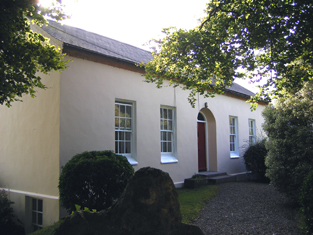
|
| Corbally South | Catherine Delany held buildings valued at £11 from William J. Sheehy in Corbally South at the time of Griffith's Valuation, with 148 acres. Buildings are still located at this site. | |
| Ballinderrig | Ballinderrig is marked on the first edition Ordnance Survey map and was occupied in the mid 19th century by Jane Cantillon. She held the property valued at £13+ from Eliza Bury. Catherine Cantillon was also resident in the townland at Courtstown Cottage Grid Ref W774 720. By the publication of the 25-inch Ordnance Survey map in the 1890s the latter property has become known as Courtstown House. It is still extant. | |
| Green Mount (Passage West) | Robert Hodgson was leasing Greenmount from the Boland estate at the time of Griffith's Valuation, when it was valued at £19. It is still extant and occupied. |
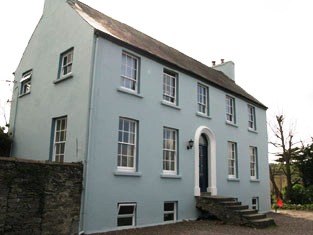
|
| Mansfield (Passage West) | At the time of Griffith's Valuation, William Browne was leasing this property from the Boland estate, when it was valued at £56. It is still extant. | |
| Peafield (Templemodan) | In 1786 Wilson refers to Peafield as the seat of Archdeacon Mockler. There is no substantial house shown in this area on the 1st edition Ordnance Survey map. By the time of Griffith's Valuation, the townland was in the possession of Thomas Boyce. |

